At the beginning of the Second World War, Gainsborough’s industrial giants were once again called upon to join the war effort, producing and developing a vast number of products for all of Britain’s armed forces. Gainsborough had a long history and great industrial knowledge in the production of agricultural equipment and packaging machines, exporting this technology around the world with both firms having renowned names and respect on the world stage.
This put Gainsborough in a good position from the start with the production capacity between the town’s firms being nothing short of outstanding for such a small town. War production for the town began some three years early than Britain entering the war when in 1936 contracts between Marshalls and the Admiralty were exchanged for the manufacture of naval guns with a new department being set up in the firm under the auspice of a Royal Navy officer, one Commander Thompson. During these early years in this new department, he would oversee the firm’s production of both 4” Twin and 4.7” High Angle guns, these being light armament for cruisers and the main armaments of destroyers.
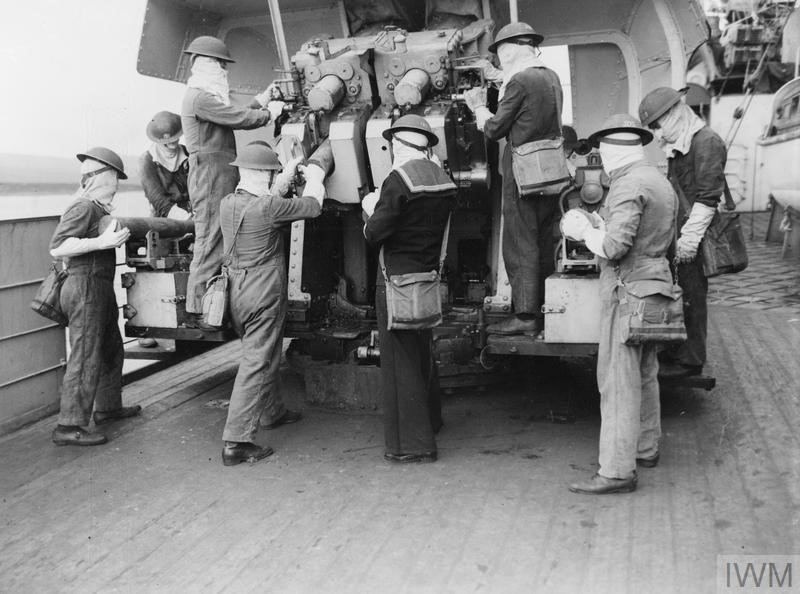
Figure 1 Crew of a dual 4-inch at action stations aboard HMS Berwick while in screening the Atlantic Convoys in May 1943, similar to those produced by M.S.& Co.
Works production expanded dramatically when Britain finally entered the war in 1939 with Marshalls producing all calibres of Anti-Aircraft Guns, Multi-Barrelled Pom-Pom, and 17 Pounder’s for the Royal Navy. All the time continuing production of their normal peacetime products alongside the military production lines. Many Road Rollers, Tractors and Boilers being contracted by the government for the construction of vital airfields and industrial projects.
The other major firm of the town Rose Brothers also switched from the production of their world-renowned packaging machines to war work seamlessly. Producing Bofors guns and later developing and designing the famous ‘Rose’ Turret when Air Chief Marshall Harris personally asked the firm to develop the new turret. It is often said that the Gainsborough firm developed the prototype for this turret in just three weeks, no small achievement in peacetime let alone when the country was at war. But that’s for another story.
The X-Craft Midget Submarines
Probably one of the most romantic stories to come out of the town during World War 2 was the involvement of Marshall Sons & Co. in the production of the X-Craft midget submarines. Marshall’s not only building the only known intact survivor but undoubtedly the most famous The exploits of the Royal Navy’s Midget Submarines later being immortalised in the 1955 movie ‘Above Us the Waves’ starring John Mills, John Gregson and Donald Sinden that tells the tale of these crafts and their heroic crews during attacks on the Norwegian fjords most notably against the pride of the German fleet ‘Tirpitz’.
Marshalls first became involved in the story of these remarkable machines in 1943 when they were selected by the Admiralty as one of three firms to be involved in the manufacture of the craft. Contracts for the building of the X20 type were thus:
X20 and X21 – Built by Broadbent of Huddersfield
X22 and X23 – Built by Markham & Co, Chesterfield
X24 and X25 – Built by Marshall Sons & Co, Gainsborough
Marshall’s were later contracted to build a further number of XE Type submarines with XE-9 and XE-10 being completed before the contract for the rest of them was cancelled following the end of the war.
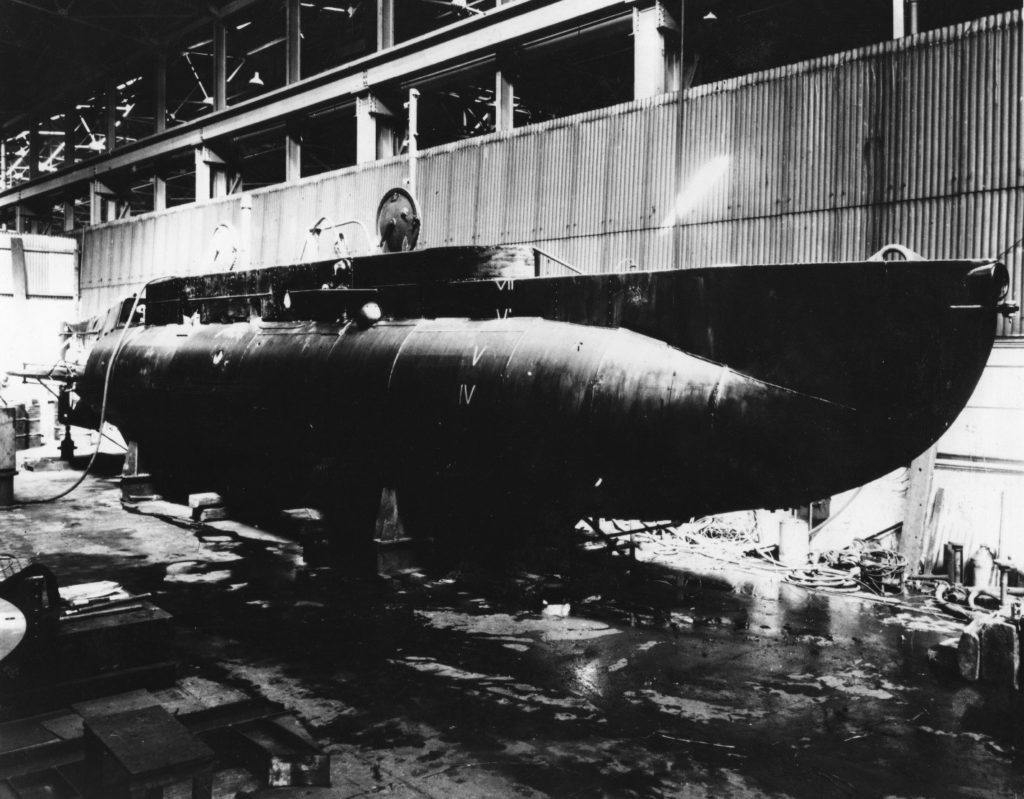
Figure 2 X-24 during production, the high corrugated cladding clearly visible in the background.
The submarines were built behind closed doors within a closed-off area of Marshall’s No.1 Yard, the area is now roughly among the car parking spaces in Marshall’s Yard shopping complex opposite the Works bookstore and Clintons. The area was fenced off by high corrugated sheeting to the level of the cranes and was said to be a tight space with one worker of the time being quoted as saying “You had to queue with your part to get inside due to the limited space. Once inside you hoped nobody had to rivet the outside, as you were in a bell”.
The engineering skills that Marshall’s had with their knowledge of boiler manufacture would have placed them in good stead as a lot of those, such as platers, riveters and welders would have worked on the manufacture of the X-Craft, my grandfather Harold Bailey being one of them although he never spoke of his time on building them to me, having passed while I was a young boy.
There are many interesting stories that I have been told over the years by ex-Marshall men, many of whom are no longer with us like John Norton, who built our model of X-24 at the Heritage Centre, Sid Archer our first chairman and good friends Gerald Teft and Fred Darwin and I have no reason to doubt any of them.
It was said that during production the part built submarine had to move to other areas on occasion and in order to maintain security and when they were eventually shipped out from the factory, the submarines were shrouded in a plywood replica of a motor launch to hide their true identity. Another tale tells of how whenever they were moved out of No.1 yard the gas lamp at the end of Etherington Street had to be removed in secret and replaced before morning as if nothing had happened. Although, it has often been said that this was Gainsborough’s worst kept secret.
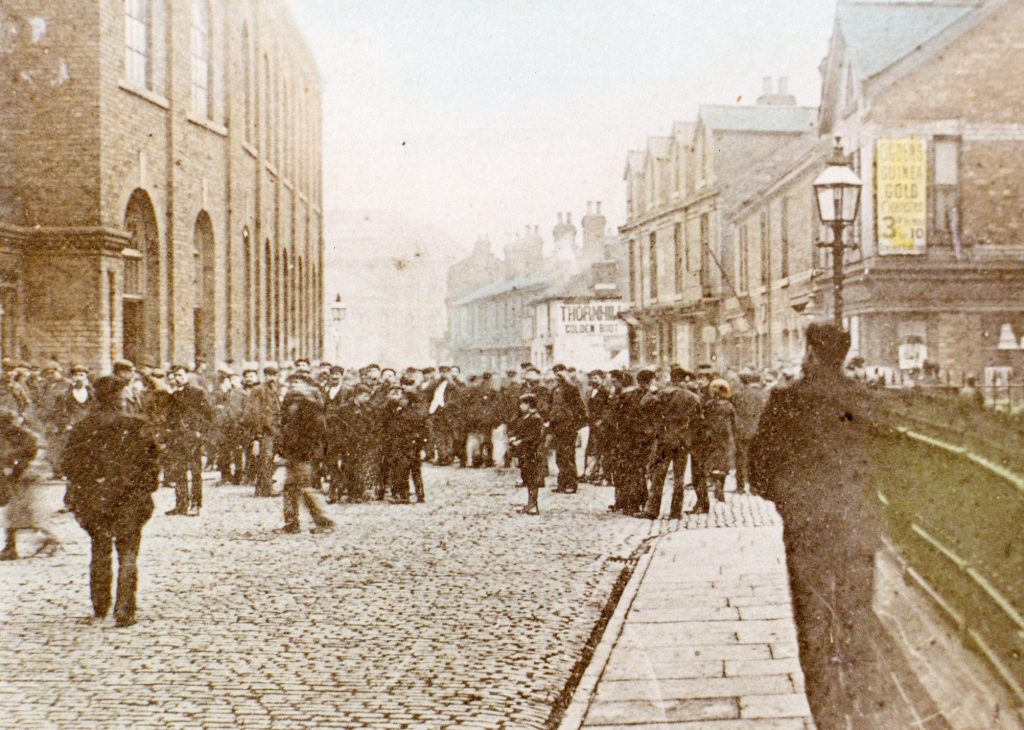
Figure 3 Gas Lamp top of Etherington Street
When completed the submarine had a length of 51’ 9 ½“ with a beam of 5’ 10” and weighed 27 ton when fully armed with its two 7,440lb charges of Amatol high explosives it had a displacement of 40 tons. Propulsion for the vessel was provided by a 4 cylinder, 42 hp diesel engine, the Gardner 4LK which was the same engine used in the famous London Red buses. Electric power for when submerged came from a 30hp electric motor, having a surface speed of 6.5 knots (7.5mph).
The weapons of the X-Craft consisted of Limpet mines and the two main side-mounted cargoes of the explosive charge that could be dropped to the seabed and detonated by a time fuse giving the X-Craft sufficient time to place a safe distance between them and their targets. The crew of four consisted of a commander, pilot and ERA (Engine Room Artificer or Engineer) and a specialist diver. It was the tradition that the crew, who gave X-24 her unofficial name of ‘Expeditious’ would have spent time at the factory to oversee the final fitting of the vessel before they were shipped by rail to HMS Varbel at the former Port Bannatyne hotel ‘Kyles Hydro’ in the Firth of Clyde, Scotland.
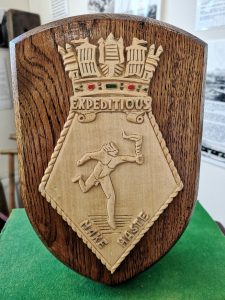
Figure 4 Hand-carved repro of X-24’s name plaque at the Heritage Centre
X-24 was soon to see service and to go down in the annals of history as twice penetrating the harbour at Bergen in Norway, one of the most heavily defended ports under the control of the German military. She was also the first craft of her kind to actually sink an enemy vessel and during her career sank many hundred more times her own tonnage of enemy vessels.
In April of 1944, the officers of X-24 were to learn the nature of their newest target, the Laksevaag floating dock at Bergen. The target was being used by the German’s infamous U-Boats and was the largest of the floating docks available during the war.
Because of their size the X-Craft required a tow to within a close distance of their targets and in this instance, it would be the larger submarine HMS Sceptre under the command of Lieutenant Ian McIntosh, D.S.O., M.B.E., D.S.C., R.N. X-24 was towed to within 35 miles of her target before being released to run under her own power and the mission started properly for her crew commanded by Lieut. M.H. Shean, R.A.N.V.R.
During all of this time and the initial approach to Bergen the submarine was running at ‘Normal Attack Stations’ with Shean at the periscope, Sub-Lieutenant J. Brooks at the controls, ERA V. Coles at the steering position and Sub-Lieutenant F. Ogden helping Shean with navigation.
Running at a depth of 25 feet and climbing to periscope depth every five minutes, life soon became hectic, Shean recounting later that they counted 40 ships while they weaved through the minefield with collision often appearing imminent, and frighteningly among these were a number of anti-submarine vessels, one of these transmitting and eventually making contact with X-24 via Asdic. The crew stating later that they could hear the ‘ping’ striking the vessel “It was just like water dripping into an enamel bowl,” one of them wrote subsequently.
Defensive manoeuvres were immediately applied zigzagging until the ‘ping’ of the Asdic dissipated and eventually ceased, giving the crew of X-24 a sigh of relief and brief respite.
Shortly after this, the crew got their first sight of the target, but traffic was even more intense causing fear among the crew that the periscope would be spotted. With one vessel, a minesweeper getting so close that Shean could only see her number painted on her hull, the crew of four regularly held their breath.
“Sixty feet. Revolutions for one knot. Course 166 degrees to close the dock.” Max was making a practice run-in before he embarked on the attack proper.
After the right number of minutes had ticked away on the control-room clock they passed under one dark object and then under another. The second they judged to be the dock, and they were still making their reckonings when the craft grounded at sixty feet. Stop. . . . Astern. . . . Out again to the middle of the harbour.
The approach was done several more times until Shean was happy they were in the right position and the cargoes dropped from the side of the craft. With the charges on a four-hour fuse, it was time for X-24 to turn tail and run.
Unbeknown to the crew at the time, the confusion on approach and what they were seeing through the periscope had them drop their charges underneath a 7,500-ton merchant vessel, Barenfels which was berthed at a large coaling jetty. The ensuing explosion sank the Barenfels and caused considerable damage to the coaling jetty, placing it out of action for the rest of the war. Unfortunately, the damage to the floating harbour wasn’t so successful but with the return of X-24 safely and the Commander-in-Chief, Home Fleet, describing the operation as “a magnificent achievement, ably planned and most daringly carried out”. Lieut. M. H. Shean, R.A.N.V.R., was awarded the D.S.O. for his role during the operation.
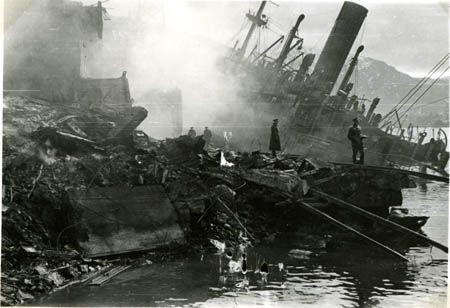
Figure 5 The Barenfels, almost completely submerged after the attack.
X-24 would enter Bergen Harbour again on the 11th September 1944, this time commanded by Lieut. H. P. Westmacott, D.S.C., R.N., of Bembridge, Isle of Wight. The passage to the dock this time took an amazing 80 hours across open see in extremely bad weather. Before X-24 travelled once more through 30 miles of treacherous waters off the Norwegian coast, negotiating minefields and other harbour defences at Bergen before once again setting herself beneath the Laksevaag floating dock.
During their approach to the dock, Lieut. Westmacott later said he was able to read through his periscope a notice attached to the mainmast of the Barenfels reading ‘wreck warning’ a reminder of X-24’s successful sinking on its previous mission. Determined to be even more successful on this journey Westmacott and his crew took their time and eventually placed the charges under the floating dock before retreating to safety. This time the resulting explosion completely destroyed the floating dock along with a small merchant vessel moored alongside. Lieut. Westmacott received the D.S.O. “for great gallantry in a most hazardous operation”.
Honours
What the midgets achieved may be estimated from the following list of awards made to officers and men of the X craft Flotilla, sent to Messrs Marshall’s by the Flotilla Captain.
2 x Victoria Crosses
7 x Distinguished Service Orders
10 x Distinguished Service Crosses
3 x Conspicuous Gallantry Medals
2 x Distinguished Service Medals
And a total of 26 Mentions in Despatches
The Flotilla Captain added this tribute:
“No man can achieve results if the weapons which he has to use fail him when the test comes. It was your responsibility to produce weapons that would not fail.
I can well believe that for a firm to be faced with shipbuilding – and shipbuilding of such a technical and specialised sort – was a most unexpected call on your resources, but I can truthfully say that the results you produced were magnificent.
The officers and men of this Flotilla who manned the submarines which were built by you never had the slightest reason to doubt the soundness and excellence of their craft.”
These submarines went out of Marshall’s ready to take the water. They were equipped down to the last detail, even to the making of the plaque.
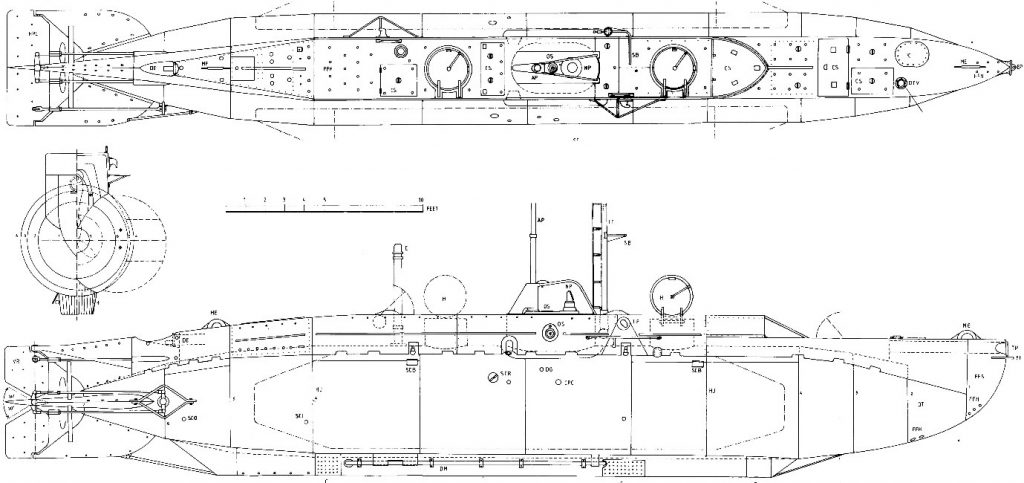
Figure 6 Line drawing of X-24 Midget Submarine ‘Expeditious’
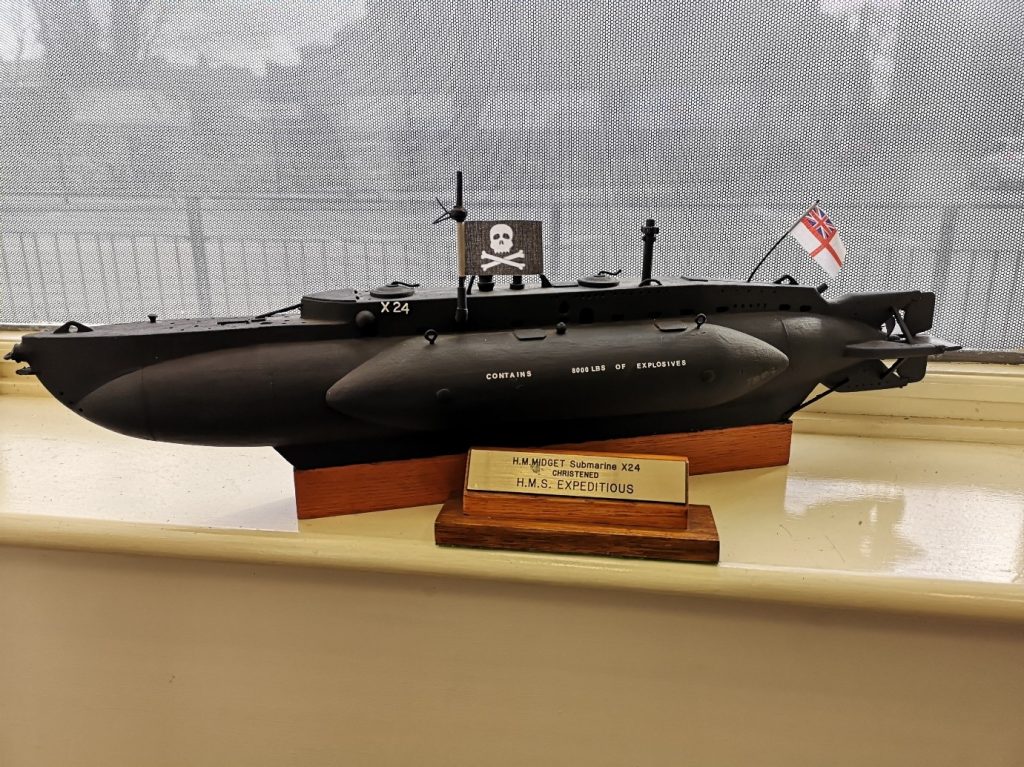
Figure 7 H M Midget Submarine X24 – HMS Expeditious

Comments(2)
Nigel Stevenson says
9th May 2020 at 8:18 amHave you any information on what which houses were built when on both Morton Terrace from Gainas Avenue to North Marsh Road and also shops, the school and houses on Morton Front from The ship Inn to Pumfries House please
Andrew Birkitt says
11th May 2020 at 5:17 pmHi Nigel
We probably do have that information at the Heritage Centre, unfortunately due to the current lockdown situation we are unable to access much of our archives so it is not a question I can currently help you with. You could email the research team, see our contact page for details and we will endeavour to answer this for you as soon as we can.
Recent posts
Events